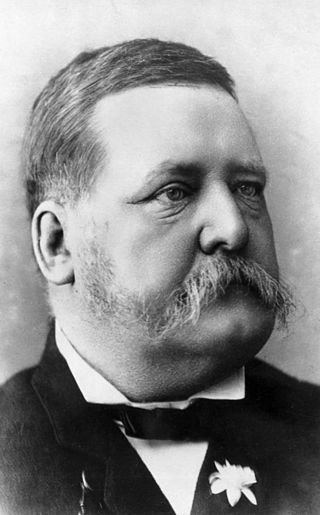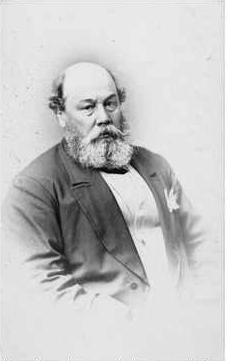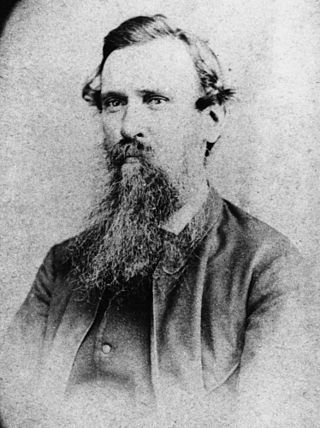Related Research Articles

The Victorian Railways (VR), trading from 1974 as VicRail, was the state-owned operator of most rail transport in the Australian state of Victoria from 1859 to 1983. The first railways in Victoria were private companies, but when these companies failed or defaulted, the Victorian Railways was established to take over their operations. Most of the lines operated by the Victorian Railways were of 5 ft 3 in. However, the railways also operated up to five 2 ft 6 in narrow gauge lines between 1898 and 1962, and a 4 ft 8+1⁄2 instandard gauge line between Albury and Melbourne from 1961.

Sir Thomas McIlwraith was for many years the dominant figure of colonial politics in Queensland. He was Premier of Queensland from 1879 to 1883, again in 1888, and for a third time in 1893. In common with most politicians of his era, McIlwraith was an influential businessman, who combined his parliamentary career with a prosperous involvement in the pastoral industry.
VicRoads is a government joint venture in the state of Victoria, Australia. In the state, it is responsible for driver licensing and vehicle registration. It is owned and operated through a joint venture between the Victorian government and a consortium made up of Aware Super, Australian Retirement Trust and Macquarie Asset Management.

Sir Arthur Blyth was Premier of South Australia three times; 1864–65, 1871–72 and 1873–75.

George Henry Thorn (junior) was a Member of the Queensland Legislative Assembly and a Premier of Queensland, Australia.
The Melbourne and Metropolitan Board of Works (MMBW) was a public utility board in Melbourne, Australia, set up in 1891 to provide water supply, sewerage and sewage treatment functions for the city. In 1992, the MMBW was merged with a number of smaller urban water authorities to form Melbourne Water. MMBW was abolished in 1992.

The Department of Transportation is the executive department of the Philippine government responsible for the maintenance and expansion of viable, efficient, and dependable transportation systems as effective instruments for national recovery and economic progress. It is responsible for the country's land, air, and sea communications infrastructure.

The Hawthorn Bridge crosses the Yarra River, five kilometres (3.1 mi) east of Melbourne, Victoria, Australia, connecting Bridge Road and Burwood Road. It is the oldest extant bridge over the Yarra River and is one of the oldest metal bridges in Australia. It was constructed in the early wave of major new infrastructure funded by the Victorian gold rush. Designed by Francis Bell, it is a substantial riveted, wrought iron, lattice truss structure, with bluestone abutments and piers.

James Macpherson Grant was an Australian solicitor who defended the Eureka Stockade rebels and a politician who was a member of the Victorian Legislative Assembly and the Victorian Legislative Council.
Clement Wilks was a notable civil engineer and architect in colonial Victoria, Australia.

Thomas Blacket Stephens was a wealthy Brisbane businessman and newspaper proprietor who also served as an alderman and mayor of Brisbane Municipal Council, a Member of the Legislative Assembly of Queensland and a Member of the Queensland Legislative Council.

Lieutenant-General Sir Richard Hieram Sankey was an officer in the Royal (Madras) Engineers in the East India Company's army in British India, later transferring to the British Army after the Indian Rebellion of 1857 and the assumption of Crown rule in India. Sankey Tank which he constructed to meet the water demands of Bangalore is named after him. The high court building in Bangalore, Attara Kacheri, was designed by him and built by Arcot Narrainswamy Mudaliar.

The Frederick and Pennsylvania Line railroad ran from Frederick, Maryland to the Pennsylvania-Maryland State line, or Mason–Dixon line near Kingsdale, Pennsylvania consisting of 28 miles (45.1 km) of center-line track and 29.93 miles (48.17 km) of total track including sidings. Chartered in 1867, the railroad started construction in 1869 and cost $868,687.50.

Francis Longmore was a politician in colonial Victoria, commissioner of railways and roads 1869 to 1870 and for Crown Lands 1875 and 1877 to 1880.
Peter Paul Labertouche (1829–1907), was a British engineer and public servant, who spent most of his working life in Melbourne, Australia in the roads and railway department of the Government of Victoria. He was descended from the Huguenots of Co. Wexford; Scales family of Kerry and Cadden of Galway.
The Department of Economic Development, Jobs, Transport and Resources (DEDJTR) is a former department of the Government of Victoria. It was created on 1 January 2015 by the government of Premier Daniel Andrews when the number of government departments was reduced from 9 to 7, and assumed responsibility for ministerial portfolios previously spread across 5 departments. It was abolished at the end of 2018 and divided into two new departments.
Manitoba Transportation and Infrastructure is the provincial government department responsible for managing infrastructure in Manitoba. It is in charge of "the development of transportation policy and legislation, and [of] the management of the province’s vast infrastructure network."
The Ministry of Transport, later known as the Department of Transport, was a statutory ministry that acted as the chief transport agency of the Government of Victoria between 1958 and 1996. Originally established by the Transport Act 1951 and strengthened by the Transport Act 1983, the Ministry took on a variety of roles, coordinating the state's other transport operations and reporting to a number of Ministers throughout its history.

The Secretary for Public Works, later the Minister for Public Works was a long standing ministry in the administration of New South Wales created in 1859 and abolished in 2003.
The Department of Railways was an subdepartment of the Victorian Government's Board of Land and Works that was the first government operator on the Victorian railway system.
References
- ↑ "Legislative Assembly: Thursday, 24th March". Ballarat Courier. 25 March 1870. p. 2. Retrieved 10 December 2019.
- ↑ "Parliament of Victoria: Legislative Assembly: Tuesday, 23rd May". Bendigo Advertiser. 25 May 1871. p. 3. Retrieved 10 December 2019.
- 1 2 "Agency VA 2875: Department of Railways and Roads". Public Record Office Victoria. Retrieved 10 December 2019.